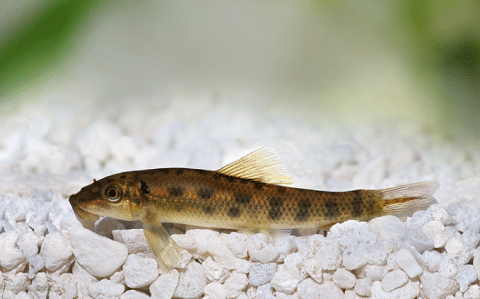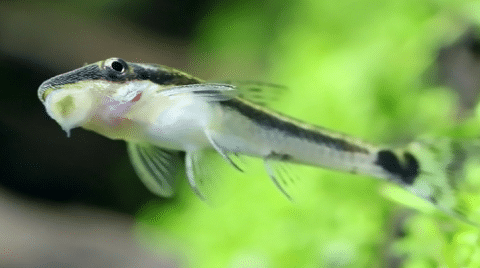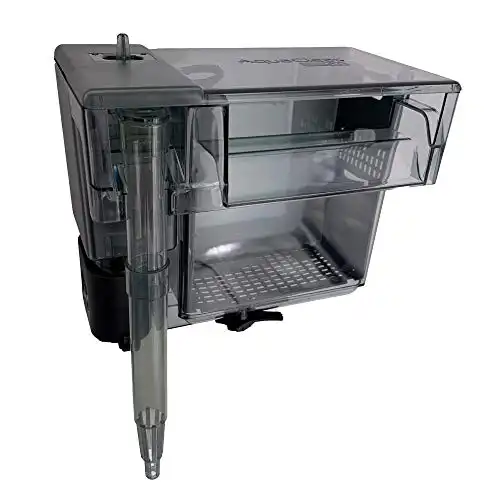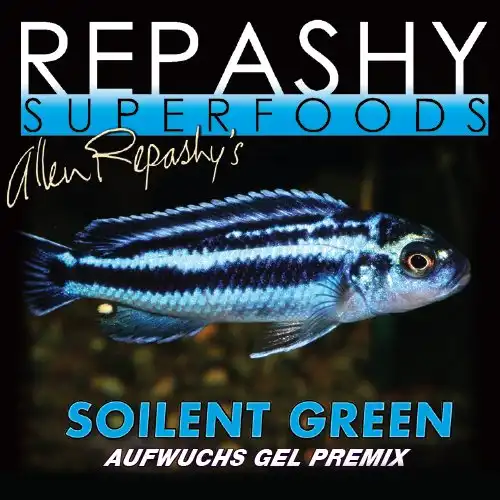Thank you for visiting! By the way… any links on this page that lead to products on Amazon and other stores/partners are affiliate links Aquarium Store Depot earns a commission if you make a purchase.
Are you thinking of adding an otocinclus catfish to your tank? If so, you’ll want to read this complete guide on how to care for them. In this article, we’ll cover everything from what they eat to how to make your tank perfect for these little fish. So whether you’re a first-time fish keeper or just want to learn more about otocinclus catfish care, keep reading!
Species Overview
| Scientific Name | Otocinclus spp. |
| Common Names | Otocinclus catfish, otos, dwarf suckers |
| Family | Loricariidae |
| Origin | South America |
| Diet | Herbivore |
| Care Requirements | Moderate to Advanced |
| Activity | Moderate |
| Lifespan | 3 to 5 years |
| Temperament | Peaceful |
| Tank Level | Bottom to middle level |
| Minimum Tank Size | 20 gallons |
| Water Temperature Range | 74°F to 79°F |
| Water Hardness | 6 to 10 KH |
| pH Range | 6.8 to 7.5 |
| Filtration/Water Flow | Moderate |
| Water Type | Freshwater |
| Breeding | Egg Layer |
| Difficulty to Breed | Difficult |
| Compatibility | Community tanks |
| OK, for Planted Tanks? | Yes |
Origin and Habitat
There are nearly 20 different species of known otocinclus catfish. Not all of these species have made their way into the aquarium, but the ones that have can be difficult to tell apart from one another. In general, any otocinclus species that is available for sale in the aquarium hobby will be labeled as a general type of otocinclus catfish.
That being said, all members of this genus are found in similar environments and water conditions throughout South America, including the Amazon basin. There, they can be found at the margins of small rivers and streams, hiding and feeding in dense vegetation. They have also been documented occupying floating mats of vegetation away from the edge of the water.
Appearance
Several species of otocinclus have made their way into the aquarium hobby. Each one has a slightly different appearance, though most average hobbyists are unable to tell them apart.
Here are some of the most common oto catfish species you’re likely to come across:

Otocinclus vestitus. This species lacks a black tail marking or a white border. Instead, the midlateral black stripe combines with the mottled patterning and continues onto the tail in a straight fashion.
Otocinclus macrospilus. This species most notably has a large, black marking at the base of the caudal fin. Some broken white outlining can be observed in between the mottled patterning and midlateral dark line.
Otocinclus vittatus. This species has a very obvious white border to its midlateral black line. There is no observable black marking at the base of the tail, either.
Most species of otocinclus grow to be about 2 inches at mature size, though some can grow to be close to 4 inches. The golden otocinclus (Otocinclus affinis, now described as Macrotocinclus affinis) is the smallest oto documented, growing to only about 1.5 inches; however, this species is rarely seen in the aquarium hobby.
Not only are species of otos confused with one another, but they’re regularly confused with another problematic fish, the Chinese algae eater.
Otocinclus vs. Chinese Algae Eater
Chinese algae eaters (Gyrinocheilus aymonieri) are very similar in appearance to otocinclus catfish to the untrained eye. In almost all ways, the otocinclus is the much better option as a tank mate and as an algae eater.
Chinese algae eaters end up being problematic for many hobbyists. These Asian fish grow to be very large, reaching a potential 10 inches at mature size. They have a similar body shape and coloration to small otos.

The main difference is that Chinese algae eaters have a very bold and black midlateral line with a yellow margin. Chinese algae eaters also lack the mottled patterning that otos have on their dorsal areas. Siamese algae eaters (Crossocheilus oblongus) share many of these same traits but are not as big of a mistake as Chinese algae eaters are. Here’s why.
Chinese algae eaters are often sold as juveniles when they are only a couple of inches long. Unknowing hobbyists find these readily available fish as an initial answer to their algae problems. As time goes on, they soon find that their once-friendly fish start to become very aggressive and more interested in sucking other fish than cleaning algae.
In extreme cases, Chinese algae eaters will suck the slime coat off of tank mates and cause extensive injury or death.
Otocinclus Catfish Care
Otocinclus catfish are not beginner fish. They may look like the perfect solution to a new tank struggling with algae, but they do best in a mature setup where there is a constant supply of algae and other plant-based foods to graze on. These fish are notorious for starving to death when conditions are not met, which can cause devastation when kept in a school.
With some proper care and time for acclimation, otos are easy to keep.
Tank Size
Otos are small fish with a big appetite. Many sources say that a group of otocinclus catfish can happily live in a 10 gallon tank. While this isn’t completely untrue, making sure that your fish get enough food in so small of a freshwater tank can prove to be incredibly challenging.
Instead, many hobbyists recommend at least a 20 gallon long aquarium with bigger always being better. It should be noted that no matter the size of the aquarium, these fish are very shy and masters of camouflage. They will not fill up a tank but will struggle to survive if enough resources aren’t given from the beginning.
Aquarium Setup
Otocinclus catfish should only be added to an established aquarium. An established aquarium will provide both stability and food for your otos to live.
In the wild, these fish are found in relatively slow-moving waters with dense vegetation. This can be replicated in the aquarium by providing plenty of background plants, like species of Vallisneria and Rotala.
Floating plants, like frogbit (Limnobium laevigatum) and water lettuce (Pistia stratiotes), will also provide food and additional shelter. Remember, these are shy fish and prefer plenty of coverage. Either use floating plants to create areas of shade throughout the aquarium or use dim lighting with less light-demanding plant species.
In addition, tannins from various organics and botanicals may be used to stain the water brown and lower its pH. Plenty of rocks and wood structures should also be placed throughout the tank to provide additional surface area for algae and biofilm to grow as well as to provide your fish with additional hiding spots.
Eventually, your otocinclus catfish will get to know you and won’t be as scared. Unlike other catfish, otos are diurnal and will be active during the daytime. They’ll regularly be found on the aquarium glass and interact with other fish in the tank.
Water Parameters
Another difficulty of keeping otos is maintaining water parameters. These fish are not hardy and need an aquarium that has reached mature stability. They will quickly succumb to any traces of ammonia or nitrite.
That being said, it is better to keep a high amount of nutrients available in an otocinclus catfish tank setup so that algae may grow. Algae feed primarily on nitrates and phosphates, which can be introduced through food or water changes depending on the source water.
As we’ll see, these fish are demanding eaters and need to be fed regularly. Heavier feedings can help keep nutrients up to continue plant and algae growth.
Otherwise, otocinclus can tolerate slightly acidic conditions, preferring a pH range between 6.8 to 7.5. A stable water temperature between 74°F to 79°F must also be maintained with an aquarium heater.
Filter and Aeration
Otocinclus need good water quality, but low water flow. It is better to have an oversized filter than not enough mechanical, biological, or chemical filtration for these fish.
Otos will do best with a hang on the back filter, canister filter, or sump filtration that is rated for at least 2x the size of the aquarium; for smaller setups, a sponge filter may be most favorable to provide your otos with a concentrated grazing area. While these small fish should be able to swim against any currents made by the filtration, it might be necessary to baffle the return rate.
The Best Aquarium Power Filter
The worlds best selling and most reliable power filter on the market. Unchanged for years because it's so reliable and versatile
Surface agitation created by filtration should be enough to keep dissolved oxygen levels high in the aquarium. An air stone may be added for additional oxygenation and circulation.
Do Otocinclus Produce A Lot of Waste?
Believe it or not, otocinclus catfish species can create a lot of waste. They are constantly grazing and what goes in must come out. In addition, these fish need to regularly be given large quantities of food throughout the day, which will add to the bioload of the planted tank.
Keep in mind that otos need to be kept in groups so this bioload is amplified!
Lighting
As mentioned before, otocinclus catfish are shy. However, they aren’t especially sensitive to light.
Lighting will depend mostly on which species of plants are being kept in the aquarium. Higher intensities will likely be needed for more challenging species. This should not affect the behavior of your otos, but floating plants and extra structures throughout the tank can help create shaded areas of relief for your fish.
Community Tank Mates
If otos weren’t so difficult to feed, they would truly be the best community algae eater. These fish may be shy, but they’re usually completely unbothered by other peaceful fish in the aquarium. That being said, they may be more likely to hide if overly active or aggressive fish are present.
Some of the best community aquarium tank mates for otos are:
- Tetras
- Rasboras
- Danios
- Dwarf gouramis
- Small loaches
In general, it’s best to avoid keeping otos with other bottom-dwelling fish. When otocinclus catfish are not cleaning the glass or a plant, they’ll be found at the bottom of the tank. Having another group of bottom-dwelling fish could potentially take away food options and stress out your fish.
Another popular tank mate recommendation for otocinclus catfish is freshwater shrimp. However, shrimp also love to graze on algae, which could lessen food availability as well if it’s an especially clean aquarium.
How Many Oto Catfish Can Stay Together?
In their natural habitat, otocinclus have been observed shoaling by the thousands. These fish love each other’s company!
Though these fish don’t form tight schools like some other freshwater fish, they will definitely be seen interacting with one another when given the chance. At least 6 otocinclus catfish should be kept per tank at all times. Any less than this can cause your fish to become extra shy.
Of course, it is best to get as many otos as you can comfortably fit into your aquarium. Just keep in mind that you need to be able to feed them all, too!
Are They Aggressive?
No, otocinclus catfish are not aggressive. These are very peaceful fish that, for the most part, will not react to other fish. It is more likely for an oto to be bullied than for an oto to be the bully. Unfortunately, tales of aggression may have stemmed from a misidentified Chinese algae eater instead.
Fish Food and Diet
Here’s where the trouble begins. Getting otocinclus to eat and keeping them fed is the main difficulty of keeping these fish. Too often, these freshwater fish are sold as a quick fix for beginner hobbyists going through the ugly algae stages of a tank cycle. Once that cycle finishes and the otos have cleaned the tank, they are left to starve and eventually die.
The good news is that feeding otos isn’t actually hard.
Otocinclus catfish are primarily herbivores. They feed on aufwuchs, which is the organic film that covers all surfaces of aquatic ecosystems. Within aufwuchs are microscopic organisms and plants. This film is developed over time as the aquarium becomes more established.
In addition, otos will gladly eat most soft algae species within the freshwater aquarium; they are less likely to touch more macroscopic varieties, but hobbyists usually have complete success.
In order to keep food reserves up, the aquarium needs to be healthy: a healthy system equals a healthy fish. In some ways, it is better to think of feeding the tank instead of feeding the individual fish. But how do you do this?
First, give the planted tank time to mature. Full stability is reached around the 1 year mark. Next, feed the tank heavily. Provide live, frozen, and freeze-dried options to other fish in the aquarium. Finally, ensure that you feed a high-quality diet to your oto.
It is rare for otos to accept algae wafers or pellets, but not impossible. More likely, your otocinclus will appreciate a herbivorous gel food. This can be made at home or purchased from your local aquarium store.
Great For Algae Eaters!
This gel food from Repashy is an ideal formula for algae eaters. Formula makes easy to eat gels for your fish.
Another option is to provide your otocinclus catfish with fresh, blanched vegetables. Simply buy a variety of vegetables, like zucchini, cucumber, and lettuce. Cut them up and boil them for a couple of minutes. Move them to a bowl filled with ice cubes to finish the blanching process. These vegetables can then be moved to the freezer for storage.
A piece of the vegetable can be fed to the tank every couple of days, or as often as your fish are able to eat. This can become very messy over time so it’s important to remove vegetables that have been in the tank for a while.
What To Know Before Owning
The key to successfully keeping otocinclus is starting with healthy fish.
As we’ll see, oto catfish have yet to be bred at the commercial scale, making most of the individuals available wild-caught. This can make the transition to a planted aquarium very difficult in regards to disease and diet.

When picking out your otocinclus from the fish store, ask to see them eat and inquire about what they’re being fed. This should hopefully make the transition from the aquarium store to the home freshwater aquarium easier; unfortunately, it can still be difficult to get your fish to eat.
A healthy otocinclus will have a round stomach. When they are pressed up against the glass, their white bellies should look like they’ve swallowed a pearl. Underfed fish will be light in color and might have a concave stomach.
Breeding
Oto catfish have been bred in the aquarium hobby, but not with large success or description. It is believed that they are very similar breeders and egg spawners to Corydoras.
Otocinclus breed by the male interlocking with and fertilizing the female’s eggs. The eggs are then deposited in a safe area with no further parental care.
There are a few described methods for successfully breeding these freshwater fish, though most of it comes down to creating ideal environmental conditions and providing a high-quality diet. Large, cool water changes are said to help encourage spawning as well as having other active spawning species in the aquarium, such as Corydoras.
There is a great video by Fins and Whiskers that explains breeding these fish. Check it out below.
The fry needs to be fed large amounts of algae and plant matter. They are extremely small and will need to be raised in a very controlled setting.
Final Thoughts
Otocinclus catfish care can be demanding. These fish need a mature aquarium with lots of live plants and biofilm to keep them protected and fed. Most otos in the fishkeeping hobby are wild-caught, making the transition from the wild to the home aquarium difficult. As a result, they’ll need to be given a careful diet with plenty of greens.
- About the Author
- Latest Posts
I’m thrilled that you found Aquarium Store Depot! Here you’ll find information on fish, aquariums, and all things aquatics related. I’m a hobbyist (being doing this since I was 11) and here to help other hobbyists thrive with their aquariums! I adhere to a high quality Editorial Process and Review products with real life field usage and practical analysis.







